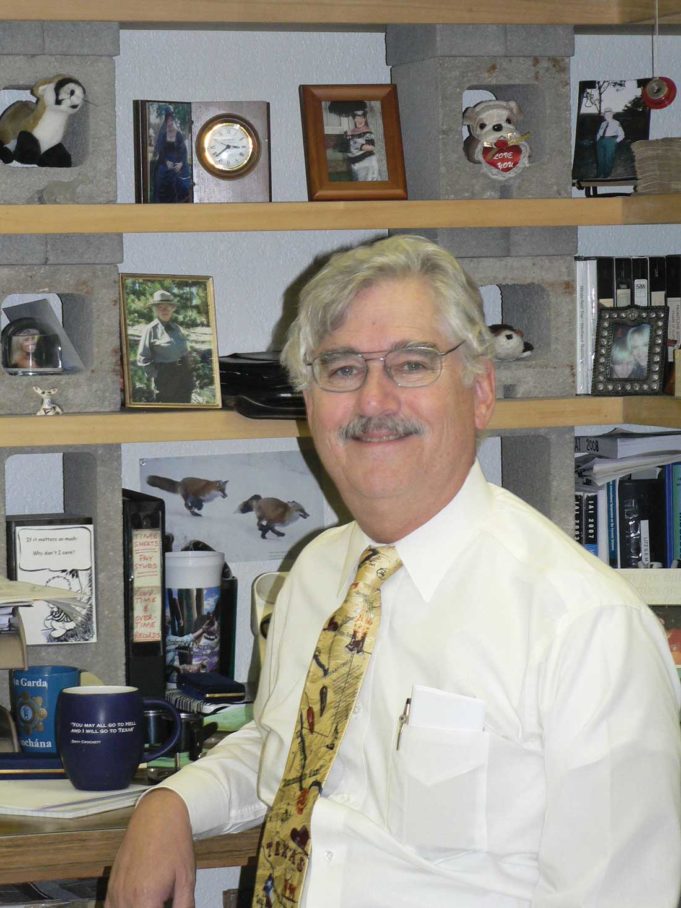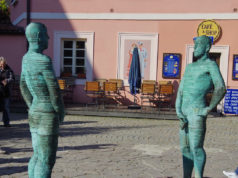Near the border in Arizona, a corpse will start to mummify in less than 24 hours.
“They don’t bloat. They don’t putrefy. They just desiccate and mummify. Getting prints from them is a difficult job.”
The person talking is Pat Wortheim, who spent nearly 20 years with the Arizona Department of Public Safety working the crime lab in Tucson as a fingerprint specialist. One aspect of his job was matching fingerprints from the medical examiner’s office to help identify the bodies of illegal immigrants who died in the desert between Nogales, Mexico, and Tucson.
“The most poignant case I ever had was an 18-year-old woman from Honduras,” Wortheim told me. “She had mummified pretty badly, and no one could get good fingerprints from her.”
By chance, Wortheim said, a short while later authorities picked up a group of undocumented Mexicans crossing the border, and it was mentioned that a young girl had died recently. One of the migrants knew of a young woman who had entered the United States from Honduras shortly before his group departed. He had a name and a hometown for her.
“Well,” Wortheim said, “the medical examiner contacted the Honduran authorities and got a document that established her identity there. And that document had a fingerprint that was little more than a smudge. I worked on that for a week, and all I could say was that it was a really rare pattern for a right thumb. But it was the same pattern on the corpse. Now that would not have been enough to establish identity in the U.S., but the ME and I talked about this young woman and the chances of it being anyone else were so slim with that rare pattern that I ended up producing a report that basically said the two patterns were the same.”
With Wortheim’s report, U.S. authorities were allowed to ship the body home to her family, to give them some closure.
“That one really bothered me,” he said. “That girl was fleeing the problems of her home country and wound up dying just inside the border here.”
In the last several years, the border crossing at Nogales and Arizona, and the trek from there across desert and mountains to Tucson, has become a focal point for pro-immigrant activists. Thousands of people — there is no real number available — attempt the crossing annually, with anywhere from three to five deaths recorded weekly. Those numbers are deceptive as well because no one knows how many others died trying to get into the United States but whose bodies have never been found. Nogales to Tucson is no different than the crossings from the Mexican border into Texas. Hundreds of bodies are found there annually as well, mostly of people trying to make it to San Antonio or Austin or Fort Worth, cities that have traditionally been passive when it comes to the treatment of illegal immigrants.
Wortheim, 69, who grew up on a small ranch in the Hill Country in the 1960s, remembers when the U.S. policy toward Mexicans and Central Americans did not create such death.
“The migrant workers came for the season, worked hard, earned their pay, then went back home,” he said. “But at some point, Mexican migrants became scapegoats for rapists, and murderers, and drug smugglers. They supposedly take our jobs. Heck, the jobs on the ranches couldn’t pay what the American people needed, so nobody was taking anyone’s job.”
Former State Rep Lon Burnam agrees with Wortheim.
“Sometime during the last 50 years, we have become Fortress America,” Burnham told me. “We don’t want anybody from south of the border here. But it was our involvement in the civil wars in Central and South America during the 1980s that created an economic crisis there, and our demand for illegal drugs that has created a drug trafficking crisis and violent drug wars that have driven these people here. That is something we as a nation need to own.”
Burnam recently returned from a three-day protest and teaching event at the Nogales border sponsored by School of the Americas’ Watch (“Bones in the Desert,” Nov. 8), a group that for many years has been protesting the U.S. School of the Americas, which trains future leaders, both military and civilian, who will be put in positions of power in Central and South American countries. It’s one of several trips Burnam has made to the area to protest our immigration policies since leaving office in 2015.
One of those trips was in June, when he spent a week working with Humane Borders, a group that sets up water stations along immigrant routes where people have died.
“I was at a Tucson City Council meeting in June when the council passed a resolution against building the border wall,” Burnam said. “While there were a handful of people who were for the wall, there was a litany of witnesses opposing it. And there were two really compelling witnesses. One was a Jewish city councilmember who equated our current foreign policy toward immigrants and refugees to what the United States did during World War II, when we turned back shiploads of Jewish people and sent them back to Germany to die.
“Another speaker was a woman who works with the Tucson medical examiner’s office. Part of her job is to identify the bodies found in the desert. She talked about the difficulty of those identifications. It was very moving.”
Wortheim’s office covered three counties in the lower third of Arizona, where most of the illegal immigrants die. He agreed that identifying the corpses was often an impossible job.
“I’d get prints taken from the corpses where the ME could find a set of printed prints, and I was supposed to make the matches,” he said. “So if he had a document the migrant was carrying that had a set of prints on it, I’d get that along with the postmortem prints and make my match. But, sadly, some of the illegals would have forged prints on them … . Sometimes there was no ID paper and no way to identify them. So they just got buried in paupers’ graves up here.”
Wortheim said he thought a lot about those people. “I wondered about their families a lot. Their loved ones came to escape something terrible or looking for an opportunity. Did their families think their loved one was working or had found a better life and just forgot about them? I mean, they couldn’t have known they’d died, so they couldn’t have closure.
“The way we’re handling things now, it just has to change. It’s not right.”












